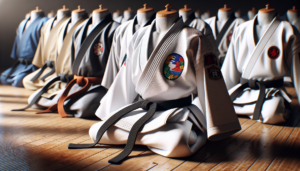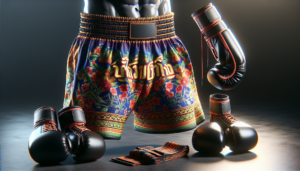Introduction to Karate Belt System
The karate belt system is a structured ranking method that signifies a practitioner’s progress and skill level in the martial art. The colored belts serve as a visual representation of a karate student’s journey, from the beginning white belt to the advanced black belt. Understanding the karate belt levels and their meanings is essential for anyone interested in this fascinating martial art.
History and Origin of Karate Belts
The use of colored belts to indicate rank in martial arts originated in Japan in the late 1800s. Jigoro Kano, the founder of judo, introduced the concept of the karate belt system, which was later expanded by Gichin Funakoshi, the father of modern karate. The belts were adopted to provide a clear and structured way to measure a student’s progress and proficiency in the art.
Purpose and Significance of Karate Belts
Karate belt meanings extend beyond mere visual indicators of rank. Each color represents a specific stage in a martial artist’s journey, symbolizing their growth, dedication, and mastery of techniques. The belts serve as motivation for students to continue their training, strive for improvement, and work towards achieving higher ranks. The karate belt system also creates a sense of community and shared accomplishment among practitioners.
Understanding Karate Belt Levels
The karate belt progression follows a specific karate belt order, with each color representing a distinct level of skill and knowledge. While the exact colors and their meanings may vary slightly between different karate styles and schools, the general hierarchy remains consistent. Let’s explore the most common karate belt levels and their significance.
White Belt: The Beginning
The white belt represents the starting point of a karate student’s journey. It symbolizes purity, innocence, and a willingness to learn. At this stage, students focus on learning basic techniques, proper stances, and the fundamental principles of karate. The white belt is a reminder that every master was once a beginner.
Yellow Belt: Opening to Teachings
As students progress from the white belt, they earn the yellow belt, which signifies their openness to the teachings of karate. Yellow belt students begin to develop a foundation of basic techniques, improve their coordination, and gain a better understanding of the art. This level marks the first step towards building a solid base of skills.
Orange Belt: Further Progress
The orange belt indicates a student’s further progress and growth in karate. At this level, practitioners refine their basic techniques, develop better coordination, and start to understand the applications of their skills. Orange belt students also begin to incorporate more complex movements and combinations into their training.
Green Belt: Intermediate Growth
The green belt represents a significant milestone in a karate student’s journey. It marks the transition from beginner to intermediate levels of proficiency. Green belt students possess a solid foundation of techniques and begin to explore more advanced concepts, such as timing, distance, and strategy.
Blue Belt: Advanced Techniques
As practitioners continue to grow, they reach the blue belt level, which represents a higher level of skill and understanding. Blue belt students focus on refining their techniques, improving their physical conditioning, and developing mental discipline. They also begin to explore more advanced kata (forms) and sparring techniques.
| Belt Color | Average Time to Earn |
|---|---|
| White | 6-9 months |
| Yellow | 7-9 months |
| Orange | 9-10 months |
| Green | 10-12 months |
| Blue | 12-20 months |
Purple Belt: Approaching Advanced Levels
The purple belt marks a significant transition in a karate student’s training. This level signifies that students are approaching advanced mastery of karate techniques and concepts. Purple belt students demonstrate a high level of proficiency in kata, sparring, and self-defense applications.
Brown Belt: High Mastery
The brown belt represents a student’s readiness to mature into higher ranks. Brown belt practitioners possess a deep understanding of karate principles and techniques. They display exceptional skill, power, and control in their movements. Brown belt students also begin to take on leadership roles, assisting instructors and mentoring lower-ranked students.
Red Belt: Intense Dedication
In some karate schools, the red belt is awarded to students who demonstrate intense dedication and mastery of the art. Red belt practitioners are considered advanced students who have honed their skills to a high level. They serve as role models for lower-ranked students and often assist in teaching classes.
Black Belt: Mastery and Teaching
The black belt is the most well-known and respected rank in karate. It symbolizes a practitioner’s mastery of the fundamental techniques and principles of the art. Black belt holders are not only skilled martial artists but also capable teachers who can pass on their knowledge to others. Earning a black belt is a significant achievement that requires years of dedicated training and personal growth.
Advanced Ranks Beyond Black Belt
While the black belt is often considered the pinnacle of karate training, there are advanced ranks beyond this level. These ranks, known as dan ranks or degrees, represent higher levels of mastery and are typically denoted by stripes or additional belts.
Dan Ranks: Levels of Mastery
Dan ranks in karate indicate advanced levels of expertise and proficiency. They range from 1st dan (shodan) to 10th dan (judan), with each successive rank representing a higher level of mastery. Advancement through dan ranks is based on factors such as technical skill, contributions to the art, and years of dedicated training.
Yūdansha: The Black Belt Holders
Yūdansha is a Japanese term that refers to individuals who hold a dan rank, typically black belt holders. These advanced practitioners have demonstrated exceptional skill, knowledge, and dedication to the art of karate. Yūdansha are respected as leaders and teachers within the karate community.
The Journey and Personal Growth in Karate
While the karate belt system provides a structured framework for progression, it is important to remember that the true essence of karate lies in personal growth and development. The journey of a karate practitioner is one of continuous learning, self-improvement, and the pursuit of physical and mental discipline.
Emphasis on Skill Development
Karate training focuses on the development of physical techniques, such as strikes, kicks, blocks, and stances. However, it also emphasizes the cultivation of mental attributes, such as focus, perseverance, and self-control. As students progress through the karate belt levels, they not only improve their technical skills but also develop greater self-awareness and confidence.
The Role of Kata and Sparring
Kata, or pre-arranged forms, play a crucial role in karate training. These choreographed sequences of techniques help students develop proper form, balance, and power. Sparring, or controlled fighting, allows practitioners to apply their techniques in a dynamic setting, testing their skills against an opponent. Both kata and sparring contribute to a well-rounded karate education.
Conclusion: What is the Best Belt in Karate?
So, what is the best belt in karate? The answer lies in the understanding that each belt represents a unique stage in a practitioner’s journey. Every level, from white to black, holds its own significance and challenges. The best belt is the one that reflects a student’s dedication, growth, and love for the art.
The Symbolism of the Black Belt
While the black belt is often regarded as the ultimate goal in karate, it is important to recognize that it is not an endpoint but rather a new beginning. The black belt symbolizes a practitioner’s mastery of the fundamentals and their readiness to share their knowledge with others. It represents a lifelong commitment to learning, growth, and the pursuit of excellence in karate.
Personal Achievement and Mastery
Ultimately, the best belt in karate is the one that represents an individual’s personal achievement and growth. It is not about the color of the belt itself but rather the dedication, discipline, and passion that a practitioner brings to their training. True mastery in karate is a lifelong journey that extends far beyond any single rank or accomplishment.
In conclusion, the karate belt system provides a structured path for practitioners to follow, but it is the journey itself that holds the greatest value. By embracing the challenges and opportunities presented at each level, karate students can unlock their full potential and achieve personal growth, both on and off the mat.






